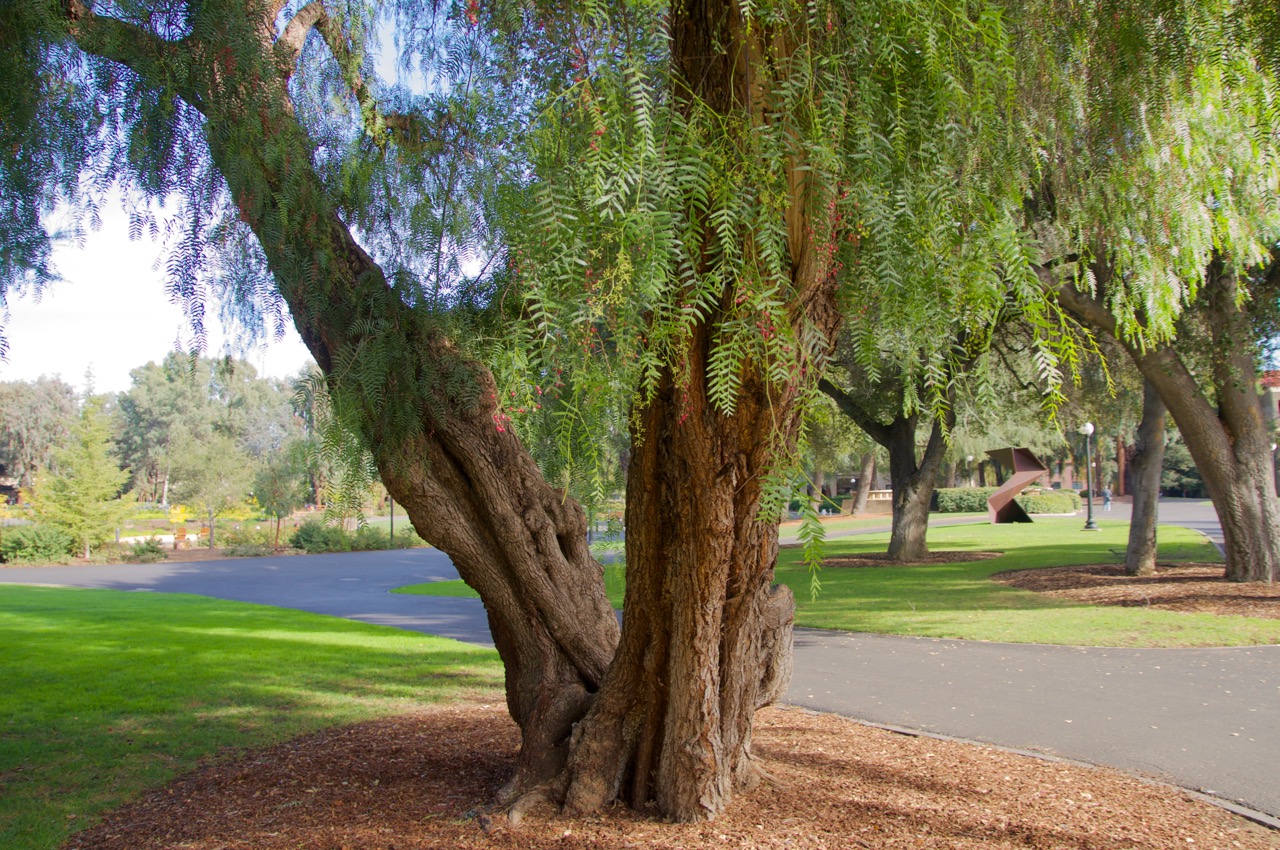Schinus molle
 Peruvian pepper tree
Peruvian pepper tree


The pepper tree has long been popular for planting all over the campus and some fine old gnarled specimens can be seen. Its clear green foliage, sometimes accompanied by cheerful rosy-red fruit, make it a pleasure to look at. Always crush a leaflet and sniff the aroma as you go by, but eating the peppercorns may be harmful. Rub your hand over the bark too. Another good tree for sniffing and feeling is the lemon-scented gum. A list of these trees should be made the basis of a tour for blind people. The trunk of the madrone would have to be on the list, and the stringybark tree and the cork oak; seed pods of the various bean family members (silk tree, honey locust, carob, redbud, for example) are interesting too.
A group of old pepper trees stands east of Palm Drive between Arboretum Road and Campus Drive. Young trees growing in lush conditions are on Stanford Avenue south of Bowdoin Street; they were planted in response to a serious attack by psyllids that knocked out many trees. Pepper trees also can be seen on Galvez Mall at the northeast corner of Green Library and across Roble Drive from the New Guinea Garden. They line Raimundo Way between Stanford Avenue and Cedro Way. In Palo Alto, see a full, dense specimen at 3721 La Donna Street.
The tree is from the Peruvian Andes: help stamp out the common name California pepper!
Name derivation: Schinus – Greek name for mastic tree (Pistacia lentiscus), which it resembles; molle – Peruvian name of the pepper tree.
About this Entry: The main text of this entry is from the book Trees of Stanford and Environs, by Ronald Bracewell, published 2005.



